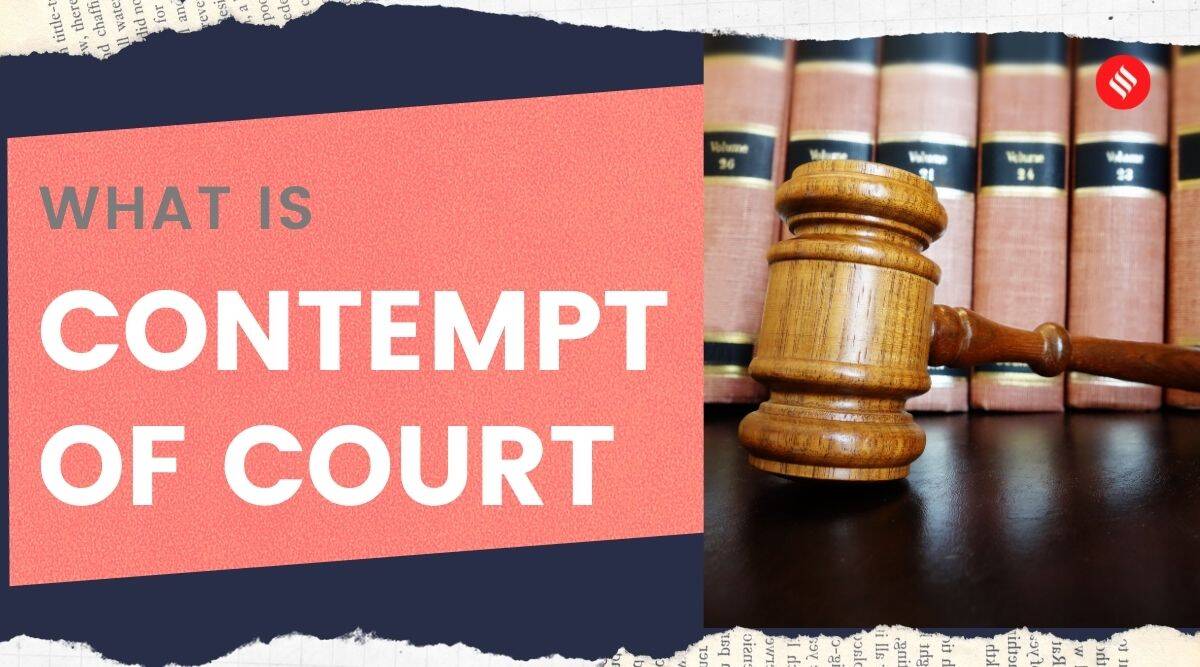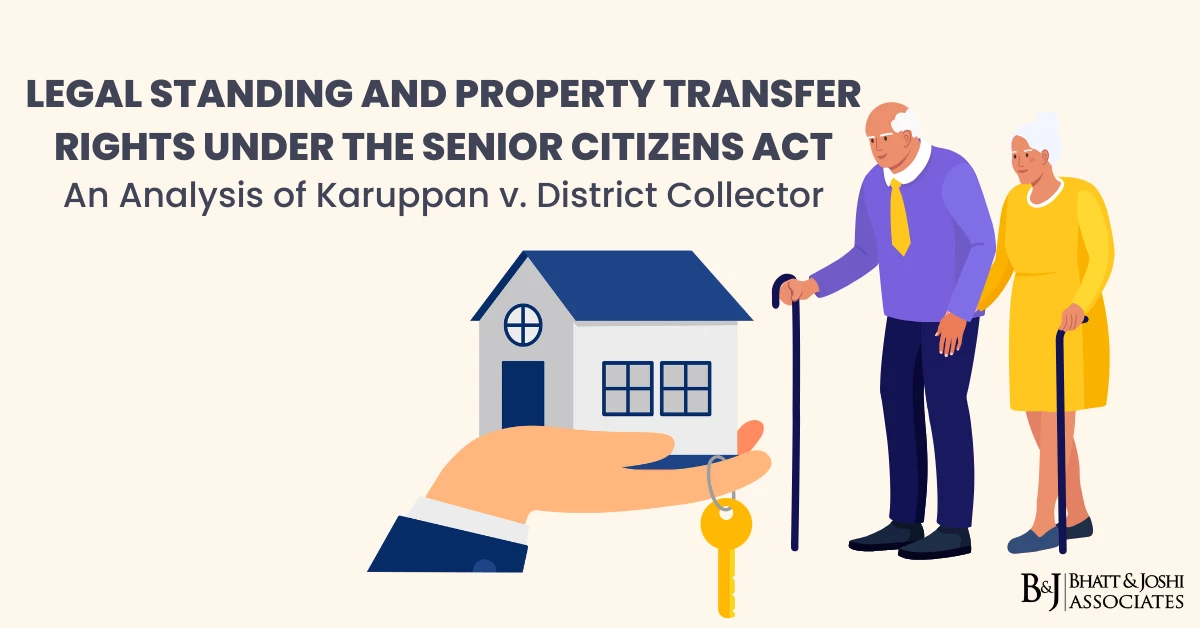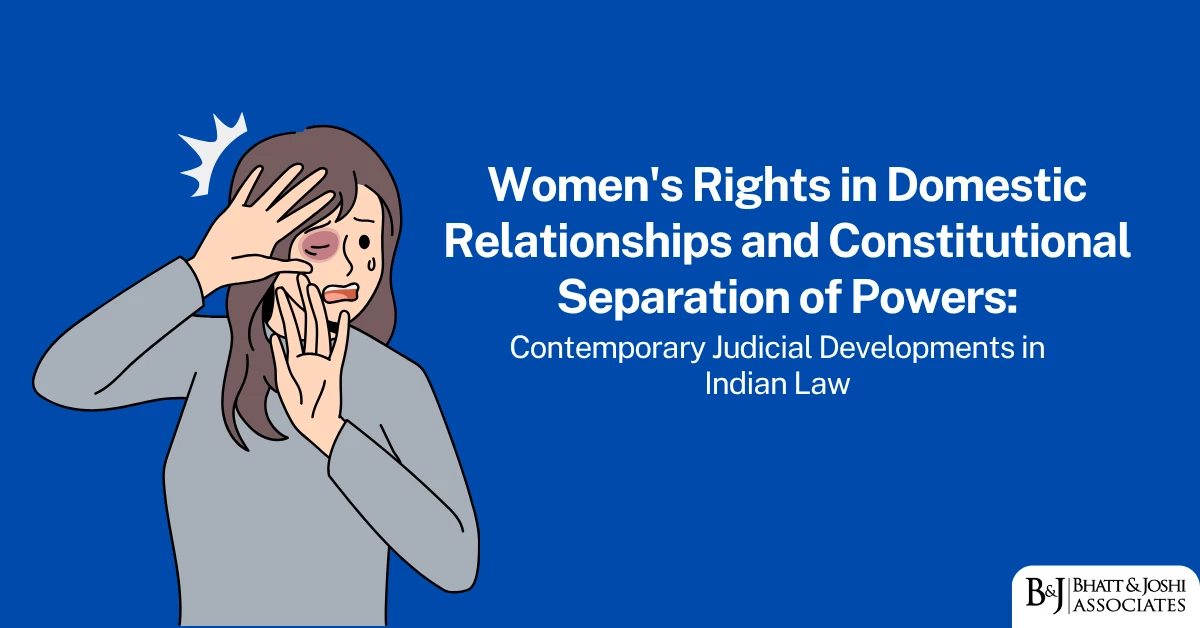Executive Summary
The doctrine of contempt of court represents one of the most significant powers vested in the Indian judiciary to maintain its authority, dignity, and effective functioning. This comprehensive analysis examines the Contempt of Courts Act, 1971, its historical development, definitional framework, procedural mechanisms, and the profound implications for legal practitioners. The Act serves as a critical bulwark protecting judicial independence while simultaneously raising important questions about the balance between institutional protection and fundamental rights to free expression.

Introduction
Contempt of court constitutes a fundamental judicial doctrine designed to safeguard the integrity and authority of judicial institutions against actions that undermine their functioning or dignity. In the Indian legal framework, this doctrine finds its statutory expression through the Contempt of Courts Act, 1971, which provides a structured approach to defining, prosecuting, and punishing contemptuous conduct [1]. The significance of this legislation extends beyond mere procedural regulation, encompassing broader questions of constitutional balance between judicial authority and individual freedoms.
The contemporary relevance of contempt law has been underscored by recent high-profile cases involving legal practitioners, activists, and public figures, highlighting the ongoing tension between protecting judicial dignity and preserving democratic discourse. This analysis provides a detailed examination of the Act’s provisions, judicial interpretations, and practical implications for the legal profession.
Historical Genesis and Legislative Development
Colonial Antecedents and Early Foundations
The conceptual foundation of contempt of court in India traces its origins to the colonial legal system, where the doctrine was initially introduced through the Regulating Act of 1773 [2]. This foundational legislation established that the newly constituted Mayor’s Court of Calcutta would possess powers equivalent to those of the English King’s Bench Court, including the authority to punish contemptuous conduct. The evolutionary trajectory of contempt law in India reflects a gradual expansion and systematization of judicial powers.
During the colonial period, the High Courts established in Bombay, Calcutta, and Madras, functioning as courts of record, exercised contempt jurisdiction to penalize interference with judicial administration. This historical precedent established the fundamental principle that courts require inherent powers to protect their own functioning and authority from external interference or obstruction.
The H.N. Sanyal Committee and Legislative Reform
The modern framework governing contempt of court in India emerged from the comprehensive examination conducted by the H.N. Sanyal Committee, established in 1961 under the chairmanship of H.N. Sanyal, the then Additional Solicitor General [3]. The Committee undertook an extensive analysis of contempt laws and procedures, examining both domestic practices and international approaches to contempt regulation.
The Sanyal Committee’s recommendations, submitted in 1963, proved instrumental in shaping contemporary contempt jurisprudence. The Committee recommended that contempt proceedings should not be initiated solely at the discretion of courts but should require the consent of appropriate law officers, thereby introducing a safeguard against potential misuse of contempt powers [4]. These recommendations formed the foundation for the Contempt of Courts Act, 1971, which replaced earlier legislation and provided a more systematic and defined approach to contempt regulation.
Constitutional Framework and Judicial Authority
The constitutional foundation for contempt jurisdiction in India is established through specific provisions that recognize the Supreme Court and High Courts as courts of record with inherent contempt powers. Article 129 of the Constitution declares that “the Supreme Court shall be a court of record and shall have all the powers of such a court including the power to punish for contempt of itself” [5]. Similarly, Article 215 extends equivalent powers to High Courts, establishing a comprehensive constitutional framework for contempt jurisdiction.
Article 142(2) further empowers the Supreme Court to make orders necessary for ensuring attendance, document production, or punishment for contempt, subject to parliamentary legislation [6]. This constitutional structure creates a balanced approach where judicial powers are recognized while remaining subject to legislative regulation and oversight.
Definitional Framework and Categorization
Statutory Definitions Under Section 2
The Contempt of Courts Act, 1971, provides precise definitional frameworks that distinguish between different categories of contemptuous conduct. Section 2(a) establishes that “contempt of court means civil contempt or criminal contempt,” creating a binary classification system that forms the foundation for all subsequent legal analysis [7].
Civil Contempt: Disobedience to Judicial Orders
Civil contempt, as defined in Section 2(b), encompasses “wilful disobedience to any judgment, decree, direction, order, writ or other process of a court or wilful breach of an undertaking given to a court” [8]. This definition emphasizes the element of willfulness, requiring deliberate and intentional non-compliance rather than inadvertent failure to comply with court directives.
The civil contempt framework serves primarily coercive rather than punitive purposes, designed to compel compliance with judicial orders rather than punish past transgressions. This distinction is crucial for understanding the remedial nature of civil contempt proceedings, which aim to vindicate the rights of parties benefited by court orders while maintaining judicial authority.
Criminal Contempt: Challenging Judicial Authority
Criminal contempt, defined under Section 2(c), encompasses a broader range of conduct that threatens judicial authority and dignity. The section identifies three specific categories of criminal contempt: conduct that “scandalises or tends to scandalise, or lowers or tends to lower the authority of, any court,” actions that “prejudice, or interfere or tend to interfere with, the due course of any judicial proceeding,” and conduct that “interferes or tends to interfere with, or obstructs or tends to obstruct, the administration of justice in any other manner” [9].
This expansive definition reflects the Act’s comprehensive approach to protecting judicial authority from various forms of interference or undermining conduct. The inclusion of conduct that “tends to” produce harmful effects demonstrates the preventive nature of criminal contempt law, addressing potential threats to judicial functioning before actual harm materializes.
Procedural Framework and Implementation Mechanisms
Initiation of Contempt Proceedings
The procedural framework for contempt proceedings reflects careful balancing between judicial authority and individual rights. Courts may initiate contempt proceedings suo motu (on their own motion) when contemptuous conduct occurs in their presence, requiring immediate notice to the alleged contemnor to appear before the court [10].
For contemptuous conduct occurring outside courtrooms, the Act establishes important procedural safeguards. High Courts may initiate proceedings only with the consent of the State’s Advocate General, while Supreme Court proceedings require consent from either the Attorney General or Solicitor General of India [11]. These requirements serve as important checks against potential misuse of contempt powers while ensuring that frivolous or politically motivated contempt proceedings are avoided.
Rights of Accused Persons and Due Process
The Act incorporates fundamental due process protections for individuals accused of contempt. Accused persons possess the right to be heard in their defense, and courts are empowered to examine evidence relevant to contempt allegations [12]. While detention during contempt proceedings is permissible, this power must be exercised judiciously and in accordance with principles of proportionality and necessity.
The procedural framework emphasizes expeditious resolution of contempt matters, particularly those involving conduct occurring in the court’s presence, which should preferably be addressed on the same day. This approach balances the need for immediate response to disruptive conduct with requirements for fair and thorough proceedings.
Defenses and Exemptions
Innocent Publication and Good Faith
The Act recognizes several important defenses that protect individuals from contempt liability in appropriate circumstances. Section 3 provides exemption for innocent publication of contemptuous material where the publisher reasonably believed that no ongoing judicial proceedings were affected or that the content contained no contemptuous elements [13].
This defense acknowledges that not all conduct that might technically constitute contempt should result in liability, particularly where the actor lacked knowledge of relevant proceedings or acted without malicious intent. The good faith standard provides important protection for legitimate journalistic reporting and academic commentary on judicial matters.
Fair Criticism and Reporting
The Act specifically exempts fair and accurate reporting on judicial proceedings and fair criticism of judicial conduct [14]. This exemption recognizes the important role of media scrutiny and public discourse in maintaining judicial accountability while distinguishing between legitimate criticism and scandalous attacks on judicial authority.
The fair criticism defense requires that comments be made in good faith, based on accurate factual foundations, and directed toward judicial conduct rather than personal attacks on individual judges. This standard attempts to preserve space for legitimate democratic discourse while protecting judicial authority from undermining attacks.
Truth as Defense: The 2006 Amendment
A significant development in contempt law occurred through the 2006 amendment, which introduced truth as a valid defense to contempt charges. Section 13 now provides that truth may serve as a defense provided that the person claiming this defense was acting in public interest and in good faith [15]. This amendment represents an important evolution in contempt jurisprudence, recognizing that truthful statements made in public interest should generally receive protection even if they might otherwise constitute contempt.
The truth defense requires satisfaction of both objective and subjective elements: the statement must be factually accurate and made with genuine public interest motivations rather than malicious intent to undermine judicial authority.
Punishment and Sanctions
Statutory Penalties Under Section 12
Section 12 of the Act establishes uniform punishment provisions for both civil and criminal contempt. The maximum punishment includes imprisonment for six months, a fine of ₹2,000, or both penalties [16]. These relatively modest sanctions reflect the Act’s primary focus on protecting judicial authority rather than imposing severe punitive measures.
The statutory framework provides courts with discretionary authority to impose appropriate sanctions based on the severity of contemptuous conduct and surrounding circumstances. This discretionary approach allows for proportionate responses to different types and degrees of contemptuous behavior.
Apology and Mitigation
Section 12 includes an important proviso allowing courts to discharge accused persons or remit punishment upon satisfaction with an apology tendered to the court [17]. This provision recognizes that many contempt cases may be resolved through acknowledgment of wrongdoing and commitment to future compliance with judicial authority.
The apology provision serves both restorative and deterrent functions, allowing individuals to accept responsibility for their conduct while demonstrating respect for judicial authority. Courts retain discretion to evaluate the sincerity and adequacy of proffered apologies, ensuring that this mechanism is not abused to avoid appropriate sanctions.
Landmark Judicial Precedents and Interpretations
Prashant Bhushan Case: Constitutional Boundaries
The 2020 Supreme Court decision in In Re: Prashant Bhushan represents one of the most significant contemporary developments in contempt jurisprudence [18]. The case involved criminal contempt proceedings against advocate Prashant Bhushan for two tweets criticizing the Supreme Court and Chief Justice. The first tweet questioned the Court’s role in allegedly undermining democracy over six years, while the second criticized the Chief Justice’s conduct during court lockdown periods.
The Supreme Court’s decision, delivered by Justices Arun Mishra, B.R. Gavai, and Krishna Murari, held that Bhushan’s tweets constituted criminal contempt by scandalizing the court and undermining public confidence in judicial institutions. The Court rejected Bhushan’s truth defense, finding that his allegations were not made in good faith or public interest but rather constituted malicious attacks on judicial authority.
The Court ultimately imposed a nominal fine of ₹1, with alternative sanctions of three months imprisonment and three-year debarment from practice if the fine remained unpaid [19]. This symbolic punishment reflected judicial restraint while affirming the principle that attacks on judicial authority would not be tolerated regardless of the perpetrator’s professional standing.
Broader Implications for Legal Discourse
The Prashant Bhushan case highlighted ongoing tensions between contempt law and freedom of expression, particularly regarding criticism of judicial conduct by legal professionals. The decision reinforced that lawyers, as officers of the court, are held to higher standards regarding contemptuous conduct and cannot claim broader free speech protections when attacking judicial authority.
The case also demonstrated the Court’s approach to evaluating truth defenses, requiring not merely factual accuracy but also good faith motivations and genuine public interest purposes. This framework provides important guidance for future cases involving criticism of judicial conduct.
Implications for Legal Practitioners
Professional Conduct Standards and Ethical Obligations
Legal practitioners face particular vulnerabilities regarding contempt liability due to their status as officers of the court and their regular interaction with judicial institutions. The Bar Council of India’s Standards of Professional Conduct and Etiquette establish specific obligations regarding respectful conduct toward courts and judicial officers [20].
Lawyers must navigate complex boundaries between zealous advocacy for clients and maintaining appropriate respect for judicial authority. This balance requires careful attention to language used in pleadings, arguments, and public statements regarding judicial matters. The higher standard applied to legal professionals reflects their special relationship with judicial institutions and their role in maintaining public confidence in legal systems.
Case Study: Professional Consequences
The case of Manikandan Vathan Chettiar illustrates the severe professional consequences that may result from contemptuous conduct by legal practitioners. Chettiar, a Chennai-based advocate, received a life ban from practice imposed by the Bar Council of India for making allegedly scandalous allegations against judicial officers and engaging in sustained attacks on judicial integrity [21].
The Madras High Court found that Chettiar had violated professional conduct standards by making uncharitable remarks against public prosecutors and scurrilous charges against sitting judicial officers. The Court emphasized that Chettiar had “thrown to wind fundamental canons of decent behaviour towards colleagues” and made “uncharitable allegations without any basis or supporting material” [22].
This case demonstrates that contempt consequences for lawyers extend beyond criminal sanctions to encompass professional discipline, including potential suspension or revocation of practicing licenses. The Bar Council’s authority to impose such sanctions provides an additional layer of professional accountability beyond court-imposed contempt penalties.
Risk Management and Best Practices
Legal practitioners must implement systematic approaches to managing contempt risks while maintaining effective advocacy. Key risk management strategies include careful review of pleadings and written submissions to ensure appropriate language and tone, training on proper courtroom conduct and communication protocols, regular updates on evolving contempt jurisprudence and judicial expectations, and development of clear policies regarding public statements about judicial matters.
Effective risk management requires understanding that contempt liability may arise from various forms of conduct, including disruptive courtroom behavior, disrespectful language in legal documents, public criticism of judicial decisions or conduct, and failure to comply with court orders or undertakings.
Contemporary Challenges and Digital Age Considerations
Social Media and Online Expression
The proliferation of digital communication platforms has created new challenges for contempt law application. Social media posts, blog entries, and online commentary about judicial matters may constitute contempt even when published outside traditional media channels. The case involving comedian Kunal Kamra’s tweets criticizing the Supreme Court illustrates how contempt principles apply to digital expression [23].
The Supreme Court initiated contempt proceedings against Kamra based on tweets criticizing the Court’s handling of cases and questioning judicial impartiality. While these proceedings were eventually withdrawn, they highlighted the potential for contempt liability to extend to social media criticism of judicial institutions. Legal practitioners must recognize that their online activities remain subject to contempt law regardless of the platform or medium used.
Balancing Institutional Protection and Democratic Discourse
Contemporary contempt jurisprudence faces the challenge of maintaining appropriate protection for judicial institutions while preserving space for legitimate democratic discourse and criticism. The Law Commission of India has noted concerns about the chilling effect of contempt law on free expression and has recommended narrowing contempt liability to focus primarily on civil contempt involving disobedience to court orders [24].
These recommendations reflect growing recognition that overly broad contempt liability may undermine democratic governance by preventing legitimate criticism of judicial conduct. However, courts must also maintain sufficient authority to protect their functioning from interference and ensure public confidence in judicial institutions.
International Perspectives and Comparative Analysis
United Kingdom Developments
The United Kingdom’s approach to contempt law has evolved significantly, with the Contempt of Court Act 1981 providing a more restrictive framework for contempt liability [25]. The UK legislation includes strict liability rules for publications that create substantial risk of serious prejudice to legal proceedings, while providing stronger defenses for good faith commentary and criticism.
Indian contempt law could benefit from examining UK developments, particularly regarding clearer standards for measuring interference with judicial proceedings and stronger protections for legitimate commentary on judicial matters. The UK’s experience demonstrates that effective judicial protection can be maintained while providing greater clarity and predictability in contempt liability.
Constitutional Court Practices
Comparative analysis of constitutional court practices reveals varying approaches to contempt regulation. Some jurisdictions have moved toward narrower contempt liability focused primarily on direct interference with judicial proceedings, while others maintain broader protection for judicial authority and dignity.
The Indian approach represents a middle ground that recognizes both institutional protection needs and individual rights concerns. However, ongoing evaluation of international best practices may inform future reforms to ensure optimal balance between competing interests.
Reform Recommendations and Future Directions
Legislative Modernization
The Contempt of Courts Act, 1971, requires modernization to address contemporary challenges and align with evolving constitutional jurisprudence. Key reform areas include clarifying standards for measuring interference with judicial proceedings, strengthening protections for good faith criticism and commentary, establishing clearer procedures for evaluating truth defenses, and providing better guidance on digital age applications.
These reforms should aim to maintain effective judicial protection while reducing uncertainty and potential chilling effects on legitimate expression. Clear standards and procedures would benefit both judicial institutions and potential contempt defendants by providing predictable frameworks for evaluating conduct.
Institutional Mechanisms
Enhanced institutional mechanisms could improve contempt law implementation and reduce potential for abuse. Possibilities include establishing independent review panels for evaluating contempt allegations, creating specialized training programs for judicial officers on contempt law application, and developing clear guidelines for legal practitioners regarding permissible advocacy conduct.
Such mechanisms would help ensure that contempt powers are exercised appropriately and consistently while maintaining necessary institutional protections for judicial authority.
Conclusion
The Contempt of Courts Act, 1971, represents a crucial component of India’s judicial framework, providing necessary tools for protecting judicial authority and ensuring effective administration of justice. The Act’s comprehensive approach to defining and regulating contemptuous conduct reflects careful attention to both institutional protection needs and individual rights concerns.
For legal practitioners, understanding contempt law is essential for effective practice and professional survival. The potential consequences of contemptuous conduct, including criminal sanctions and professional discipline, require systematic attention to compliance obligations and risk management strategies. The higher standards applied to lawyers as officers of the court demand particular care in all interactions with judicial institutions.
Contemporary challenges, including digital age communications and evolving free expression norms, require ongoing adaptation of contempt principles to maintain their effectiveness and legitimacy. Future reforms should focus on providing clearer guidance and stronger procedural protections while preserving essential judicial authority.
The balance between protecting judicial institutions and preserving democratic discourse remains a fundamental challenge requiring careful navigation by all participants in the legal system. The Contempt of Courts Act, 1971, provides a framework for this balance, but its effectiveness depends on thoughtful application by courts and careful compliance by practitioners and the public.
As the legal profession continues to evolve, contempt law must adapt to address new challenges while maintaining its core protective functions. This evolution requires ongoing dialogue between judicial institutions, legal practitioners, and civil society to ensure that contempt law serves its intended purposes without unnecessarily restricting legitimate expression or democratic participation.
The doctrine of contempt of court will continue to play a vital role in maintaining judicial authority and public confidence in legal institutions. However, its application must reflect contemporary understanding of constitutional rights and democratic governance to ensure that judicial protection serves broader goals of justice and rule of law rather than merely institutional self-interest.
References
[1] The Contempt of Courts Act, 1971 (Act No. 70 of 1971), Government of India. Available at: https://www.indiacode.nic.in/handle/123456789/12809
[2] Regulating Act, 1773, British Parliamentary Legislation for India.
[3] Report of the H.N. Sanyal Committee on Contempt of Court, 1963, Government of India.
[4] “Contempt of court in India,” Wikipedia. Available at: https://en.wikipedia.org/wiki/Contempt_of_court_in_India
[5] Constitution of India, Article 129.
[6] Constitution of India, Article 142(2).
[7] The Contempt of Courts Act, 1971, Section 2(a).
[8] The Contempt of Courts Act, 1971, Section 2(b).
[9] The Contempt of Courts Act, 1971, Section 2(c).
[10] The Contempt of Courts Act, 1971, Sections 14-15.
[11] “Contempt of Court,” Drishti IAS. Available at: https://www.drishtiias.com/daily-updates/daily-news-analysis/contempt-of-court-6
[12] The Contempt of Courts Act, 1971, Procedural Provisions.
[13] The Contempt of Courts Act, 1971, Section 3.
[14] The Contempt of Courts Act, 1971, Section 5.
[15] The Contempt of Courts Act, 1971, Section 13 (as amended in 2006).
[16] The Contempt of Courts Act, 1971, Section 12.
[17] The Contempt of Courts Act, 1971, Section 12 (Proviso).
[18] In Re: Prashant Bhushan, Supreme Court of India, 2020.
[19] “Supreme Court Fines Prashant Bhushan Re 1 in Contempt Case,” Reuters, August 31, 2020. Available at: https://www.reuters.com/article/world/lawyer-prashant-bhushan-convicted-by-supreme-court-over-tweets-faces-deadline-idUSKBN25J06D/
[20] Bar Council of India Rules, Chapter II, Part VI – Standards of Professional Conduct and Etiquette.
[21] “First lawyer banned in free India turns to Supreme Court,” DNA India, March 22, 2019. Available at: https://www.dnaindia.com/india/report-first-lawyer-banned-in-free-india-turns-to-supreme-court-2732206
[22] Manikandan Vathan Chettiar and Ors. v. Bar Council of Tamil Nadu and Ors., Madras High Court, November 3, 2015.
[23] “Supreme Court Adjourns Contempt Case Against Kunal Kamra,” Live Law, January 29, 2021. Available at: https://www.livelaw.in/top-stories/kunal-kamra-contempt-of-court-supreme-court-tweets-169080
[24] Law Commission of India, Report No. 274, 2018.
[25] Contempt of Court Act 1981, United Kingdom Parliament.
PDF Links to Download Full Judgement











